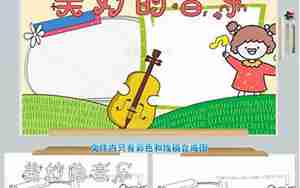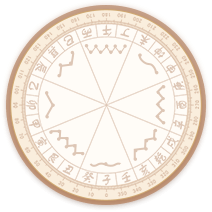音乐绘画一些美妙的句子


Title: Unraveling the Harmonies of Music and Art: A Symphony of Words
In the fascinating realm of creative expression, music and art often intertwine, creating a visual symphony of emotions. They are two languages that transcend boundaries, speaking to the soul in ways that words alone cannot. Let us embark on a journey through the mesmerizing sentences that resonate with the essence of this musical and artistic union, as if painting the canvas of sound with every phrase.
Imagine a poem by Pablo Casals, where classical notes are likened to ethereal brushstrokes: "The rhythms of Beethoven's sonatas are a dance of light, a swirling canvas where every barsha of the cello is a vibrant color in the orchestral palette." This poetic parallel evokes the visual impact of a symphony, us see the music as a tangible work of art.
The world of jazz, with its improvisational nature, can be described as a live painting, where saxophones are the artist's brushes, painting the night with their improvisational melodies. "Duke Ellington's jazz is a canvas alive, each note a stroke that builds a story, a masterpiece in the ," this imaginative prose captures the unpredictable beauty of jazz.
In the realm of abstract expressionism, the relationship between music and visual art becomes a dialogue. Jackson Pollock's drip paintings, for instance, resemble the chaotic yet ordered chaos of free jazz. "Pollock's drips are the chaotic symphony of a saxophone player's improvisations, each drop a note, creating a symphony of color," this analogy illustrates the shared emotional depth and spontaneity.
But it's not just the greats who revel in this magical fusion. Ordinary enthusiasts also find inspiration in the shared language. A grandmother might scribble in her journal, "When I listen to Vivaldi's 'The Four Seasons', I see a canvas come to life, with each violin melody painting a vivid scene of spring's flora and fauna."
These insightful sentences not only celebrate the beauty of music and art, but they also serve as a bridge, inviting the older generation to engage with these mediums in a fresh and imaginative way. They remind us that, in the end, it is our ability to perceive and interpret the world around us that truly makes these experiences transcendent.
In conclusion, the marriage of music and art in these poetic phrases is a testament to the power of creativity that transcends age. By painting the world with words, we can foster a deeper appreciation for the awe-inspiring harmony between these two universal languages. So, let us embrace the melodies and the masterpieces, for they are the silent symphonies that resonate within our hearts.
有关音乐的画怎么画
Exploring the Art of Music: Painting Soundscapes in Visual Form
Music, often said to be the universal language, has long inspired artists to translate its rhythm and emotion into visual masterpieces. The challenge of painting music is to capture the intangible, turning melodies into vibrant, tangible expressions on canvas. Here's a step-by-step guide to how one might envision a visual representation of a musical composition:
1. Begin with a Concept: To "paint" music, start by understanding the essence of the piece you wish to convey. Consider the mood, tempo, and instruments featured in the music. You may want to choose a symphony, a jazz number, or a more abstract, experimental track.
2. Choose Color Palette: Music has color, too – think of fast-paced, energetic compositions as vibrant and bold, while slower, melancholic pieces might call for softer, muted hues. Use colors to evoke the emotions conveyed by the music.
3. Musical Elements as Guides: Map out your canvas, using the structure of the song as a guide. Consider the crescendos and decrescendos as visual changes in intensity, or note sequences as patterns. Imagine a conductor's baton as a focal point for the flow of the painting.
4. Symbolism: Find visual metaphors to represent the instruments and their sounds. For instance, a violin's bow could be a flowing line, while the piano keys could be translated into a series of interconnected shapes. Bass notes could be represented by deep, textured areas, while high-pitched violins could be depicted with delicate, wispy strokes.
5. Movement and Time: Music is all about motion, so use brushstrokes that mirror the flow and timing of the旋律. Consider introducing dynamic changes in direction and texture to convey the ebb and flow of the composition.
6. Emotion and Nuances: Remember, music communicates more than just notes. Paintings can capture the subtleties of a composer's intention, like the subtle tension or release, or the joyful bounce of a dance rhythm. Focus on the emotions that the music evokes.
7. Expressivity and Interpretation: Allow room for personal interpretation in your artwork. Each viewer may perceive your painting differently, just as they hear a piece of music with their own unique perspective.
By combining these elements, the process of painting music becomes a dialogue between visual art and auditory expression. It's a creative journey that encourages the viewer to engage with the music on a deeper, visual level, the abstract tangible and the intangible, concrete.
画一幅关于音乐的画
Title: A Canvas of Sound: A Painting that Transcribes Music
Imagining a painting that embodies the essence of music is a delightful challenge. It calls for a fusion of creativity and interpretation, where colors and shapes become the visual counterpart to the melodies that resonate in our hearts. Here's a thought-provoking description of a painting that captures the spirit of a lively jazz number:
The canvas opens with a vibrant fusion of blues and gold, evoking the energy of a bustling jazz club. The lower half, like a pianist's keys, is a chaotic array of interlocking shapes in varying tones, a visual representation of the intricate patterns that weave through the bassline. These dark and warm hues create a foundation for the rhythmic vitality.
In the center, a large, fluid stroke, like a violinist's bow, moves across the canvas in a sweeping motion, its trajectory mirroring the crescendo of notes played. This stroke carries a rainbow of colors, transitioning from deep maroon to fiery sunset hues, capturing the melodic arc.
The upper half of the painting becomes a canvas of motion, with scattered brushstrokes that mimic the improvisational nature of the saxophone. Each stroke, a fleeting note, captures the spontaneity of the soloist's playfulness, creating a visual trail that tells a story.
A trail of shimmering gold represents the rhythm section's steady beat, its solid structure anchoring the improvisational chaos. The gold lines stretch across the canvas, connecting the dots of musical notes, giving a tangible sense of time and groove.
A splash of shadows in the corner adds depth, symbolizing the unseen piano player's silent determination, painting the background with delicate, whispered chords.
This painting, in essence, is a dance of light and darkness, a visual symphony where every brushstroke is a melodic phrase, inviting the viewer to embark on a journey through the sensory world of jazz. It's a testament to how art can translate the intangible beauty of music into a tangible, mesmerizing piece that speaks to both the heart and the eye.
有关音乐的画画素材
Creating a painting that captures the essence of music requires a rich selection of creative elements and visual inspirations. Here are some key painting素材 ideas for depicting music in art:
1. Musical Notations: Incorporate musical notation symbols or a simplified musical staff in the background or as a visual motif, like the treble clef, notes, and rests that communicate the rhythm and structure of the piece.
2. Instruments: Depict recognizable instruments, such as pianos, guitars, violins, saxophones, drums, or trumpets, using detailed brushstrokes or stylized silhouettes. Capture the unique shapes and textures that define each instrument.
3. Color Harmony: Choose colors that evoke the mood of the music. For instance, bright and warm colors for up-tempo jazz, dark blues and grays for classical or melancholic tunes, and vibrant hues for energetic pop music.
4. Motion and Movement: Use dynamic brushstrokes to convey the sense of movement, like the flowing lines of a violin bow or the energetic drumming patterns. Consider using splatters, drips, or organic shapes to represent the fluidity of a live performance.
5. Texture: Experiment with various textures to bring the music to life. For example, thick, impasto brushstrokes for a full-bodied sound or thinner, smoother lines to mimic the ethereal quality of a flute's tone.
6. Expression and Emotion: Capture the emotional nuances of the music by using color, contrast, and composition to reflect the mood. For example, soft, gentle brushstrokes for a calming piece or bold, bold strokes for a powerful crescendo.
7. Symbolism: Incorporate symbolic elements that communicate the story or theme of the music, such as a rising sun for a morning symphony or a starry sky for a night song.
8. Lighting and Shadows: Use light and shadow to create depth, highlighting the instruments and emphasizing the contrast between the foreground and background, much like the way lighting emphasizes the dynamics of a live performance.
9. Texture: Consider adding texture to mimic the physicality of a vintage record or concert poster, giving the painting a tangible connection to the experience.
By combining these elements, you can create a visually engaging painting that not only represents music but also invites the viewer to immerse themselves in the emotional and sensory experience of the art piece.
画关于音乐的画简单
Title: Music's Simple yet Expressive Canvas
Creating a yet evocative painting that captures the beauty of music can be a delightful exploration of minimalism. Here's a straightforward yet effective approach to bring a touch of music to your canvas:
1. Choose a Base: Select a neutral background, perhaps pale gray or white, to let the focus be on the visual representation of the music. It could represent the stage, a quiet room, or even the inner ear.
2. Essential Elements: Decide on one or two main musical instruments or notes, such as a guitar or a single note on a piano. Use , block-style shapes or delicate lines to represent them, emphasizing their silhouette.
3. Rhythm: Instead of intricate notation, use horizontal or vertical lines to suggest the flow of rhythm, much like staves on a musical staff. Short dashes or dots can represent beats and pauses.
4. Color: Use a limited color palette, such as black and a contrasting color to symbolize the main instrument. For instance, a warm tone for the guitar's strings or shades of blue for a silent piano.
5. Emotion: Consider the mood of the music you want to convey. If it's joyful, add a few brushstrokes of vibrant color or a smiley face behind the instrument. For a contemplative piece, use soft, blended colors and gentle brushstrokes.
6. Texture: Add texture to the canvas by using different brushstrokes or techniques, mimicking the wood grain of a guitar or the softness of a piano key. This gives a tangible feeling to the painting.
7. Focus: Keep the composition and centralize the instruments to emphasize the heart of the piece. Use negative space to enhance the visual impact.
An example could be a frame that highlights the silhouette of a violin, with the strings depicted as gentle, diagonal lines that seem to flow across the canvas. The violinist's bow could be a single sweeping line. By doing so, the viewer's imagination is invited to imagine the sounds that this image conjures.
Remember, the key to a successful music-themed painting is to convey the essence rather than the complexity. The simplicity in design can make the connection between the visual and auditory realms even stronger.

